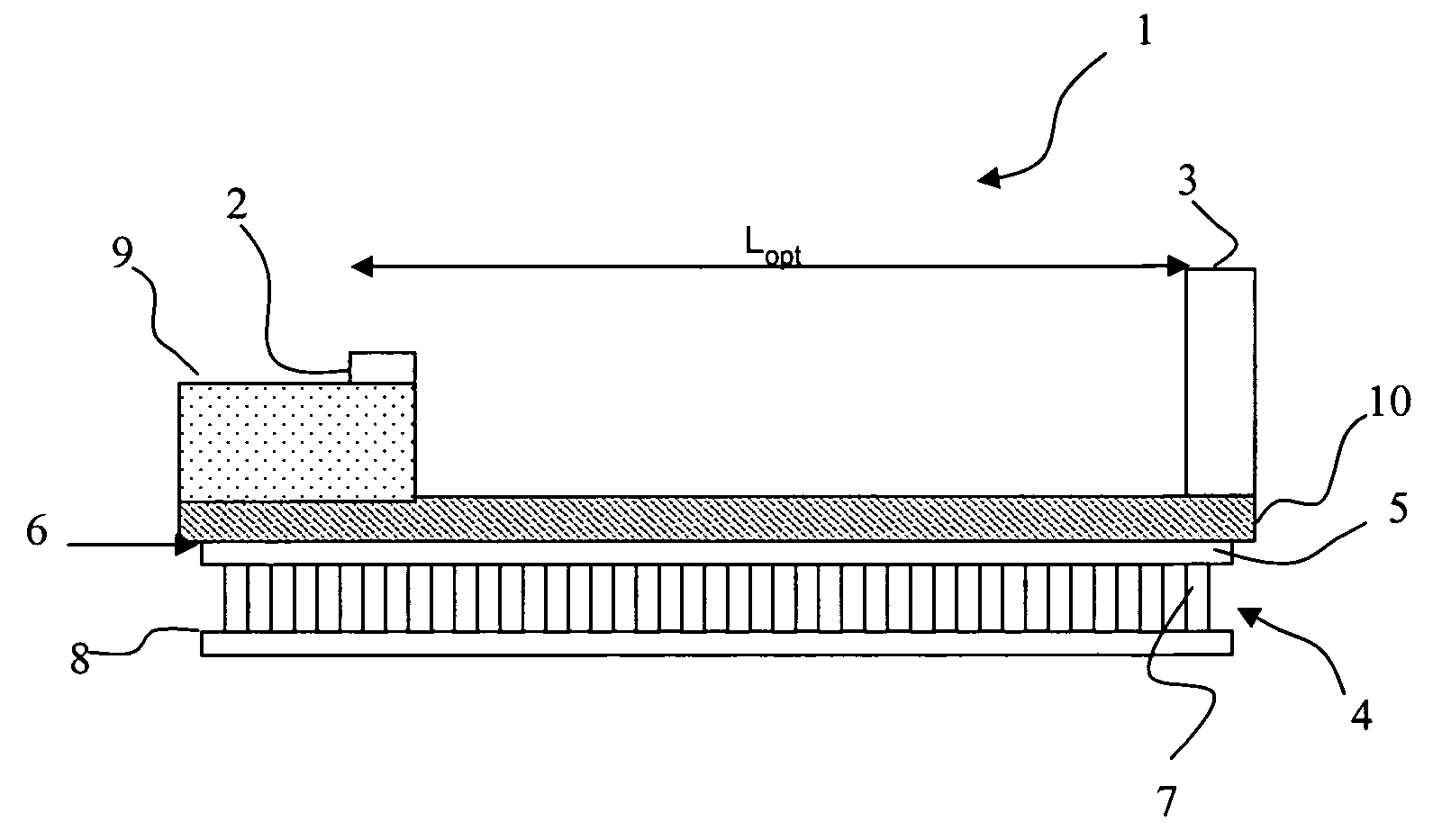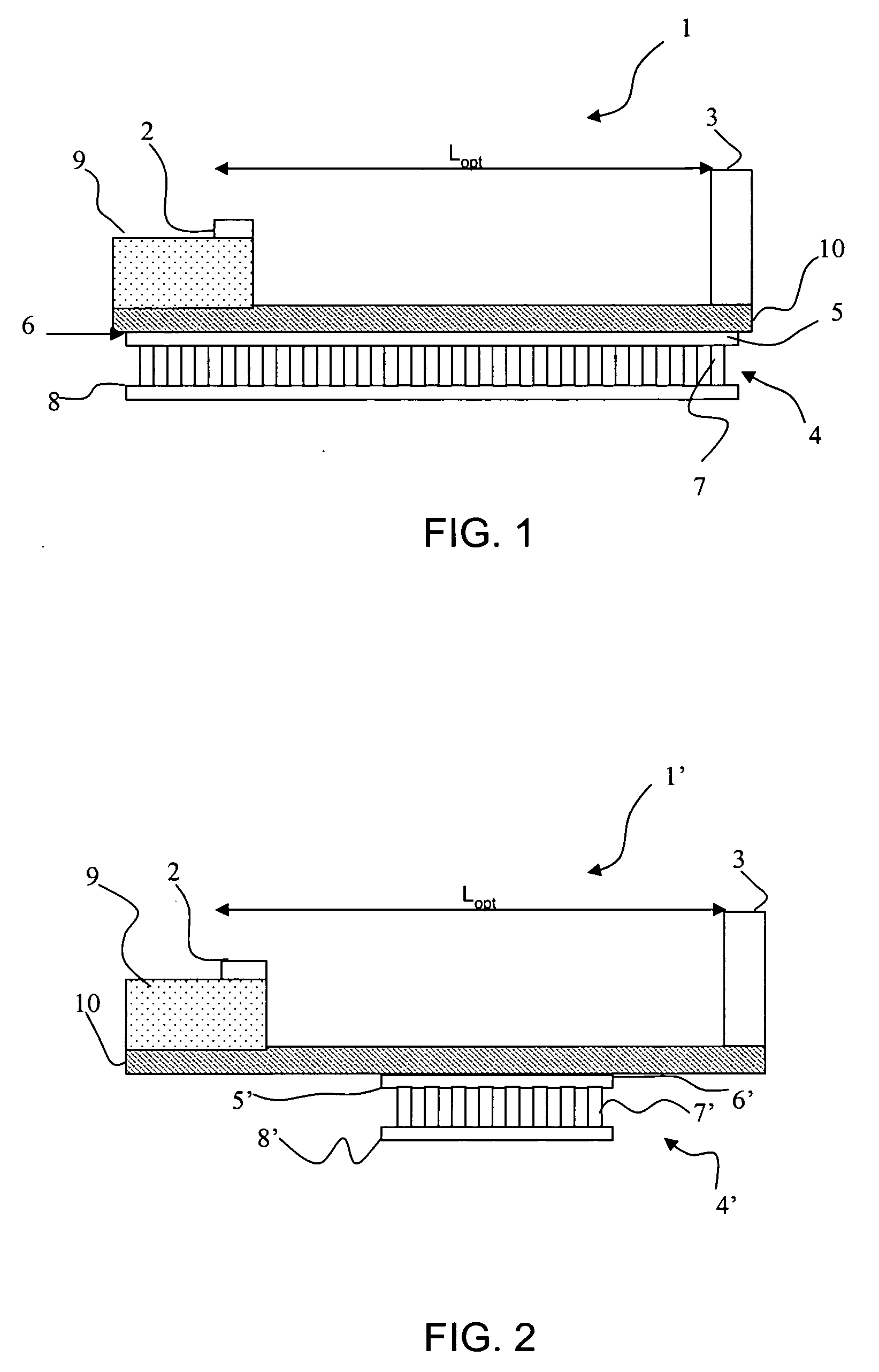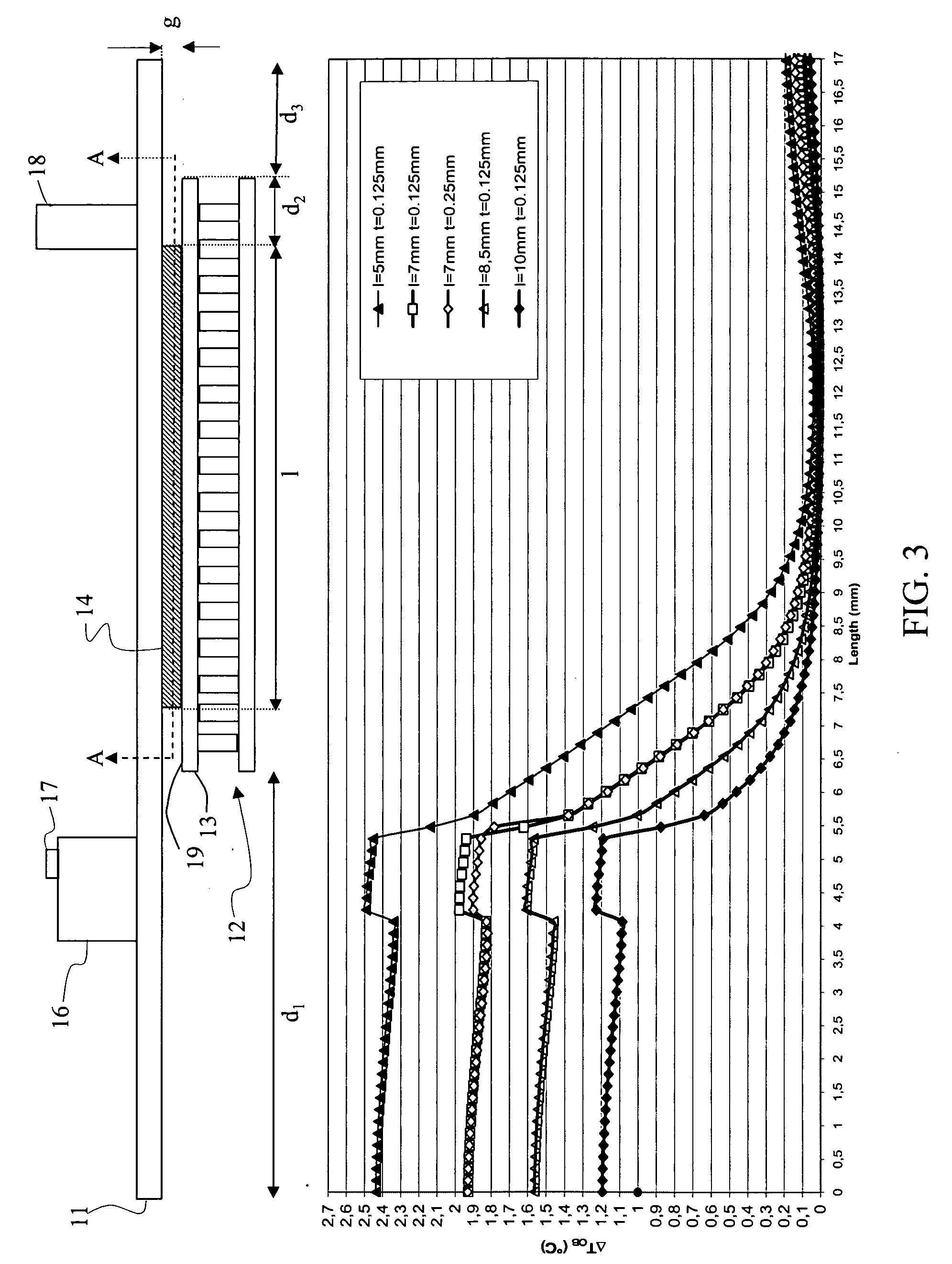Misalignment Prevention in an External Cavity Laser Having Temperature Stabilisation of the Resonator and the Gain Medium
a laser and external cavity technology, applied in the direction of lasers, optical resonator shape and construction, semiconductor lasers, etc., can solve the problems of reducing the performance of lasers, reducing wavelength stability, and reducing wavelength accuracy over the entire tuning range, so as to avoid the creation of relatively large fluctuations in laser output optical power
- Summary
- Abstract
- Description
- Claims
- Application Information
AI Technical Summary
Benefits of technology
Problems solved by technology
Method used
Image
Examples
Embodiment Construction
[0056]FIG. 3 shows results from computer simulations (by using a finite-element analyser) of the temperature curves, i.e., temperature variation, ΔTOB, vs. position along the length of an optical bench mounting a laser assembly, wherein ΔTOB=(TOB−T1) and TOB is the temperature measured on the optical bench upper surface. The upper part of the figure schematically illustrates (not to scale) the configuration of the laser module considered in computer simulations. Optical bench 11 is placed on a TEC 12 with surface area of the thermally stabilised surface 19 of 12.2×7 mm2, i.e., the TEC upper carrier plate 13 is a rectangular-shaped plate having a main longitudinal direction along the X-axis, said surface being stabilised at a temperature T1=25° C. Simulations are carried out at an environmental temperature of Tenv=70° C., i.e., ΔT=45° C. The optical bench 11 is a rectangular-shaped plate of length of 17 mm along the longitudinal main direction of the optical bench (i.e., the X axis),...
PUM
 Login to View More
Login to View More Abstract
Description
Claims
Application Information
 Login to View More
Login to View More - R&D
- Intellectual Property
- Life Sciences
- Materials
- Tech Scout
- Unparalleled Data Quality
- Higher Quality Content
- 60% Fewer Hallucinations
Browse by: Latest US Patents, China's latest patents, Technical Efficacy Thesaurus, Application Domain, Technology Topic, Popular Technical Reports.
© 2025 PatSnap. All rights reserved.Legal|Privacy policy|Modern Slavery Act Transparency Statement|Sitemap|About US| Contact US: help@patsnap.com



